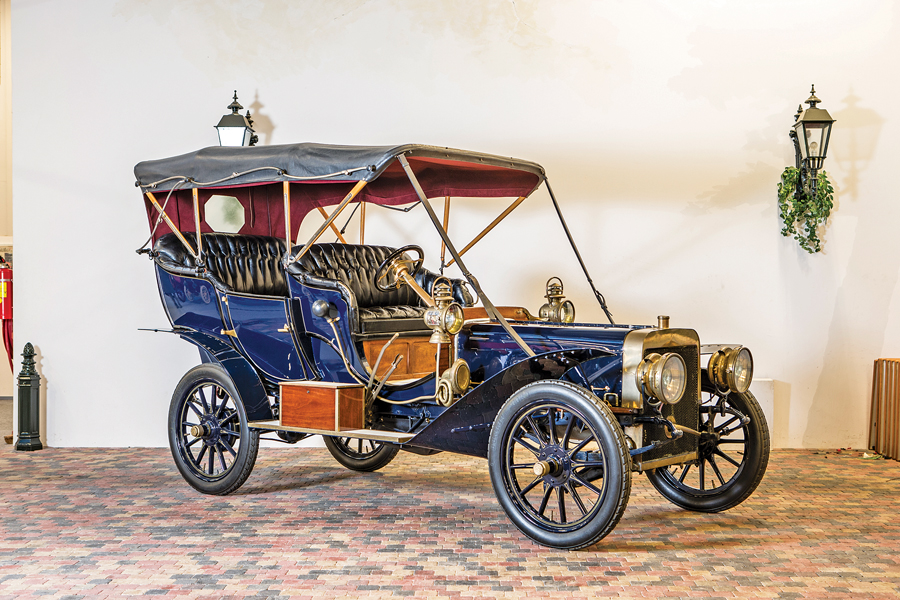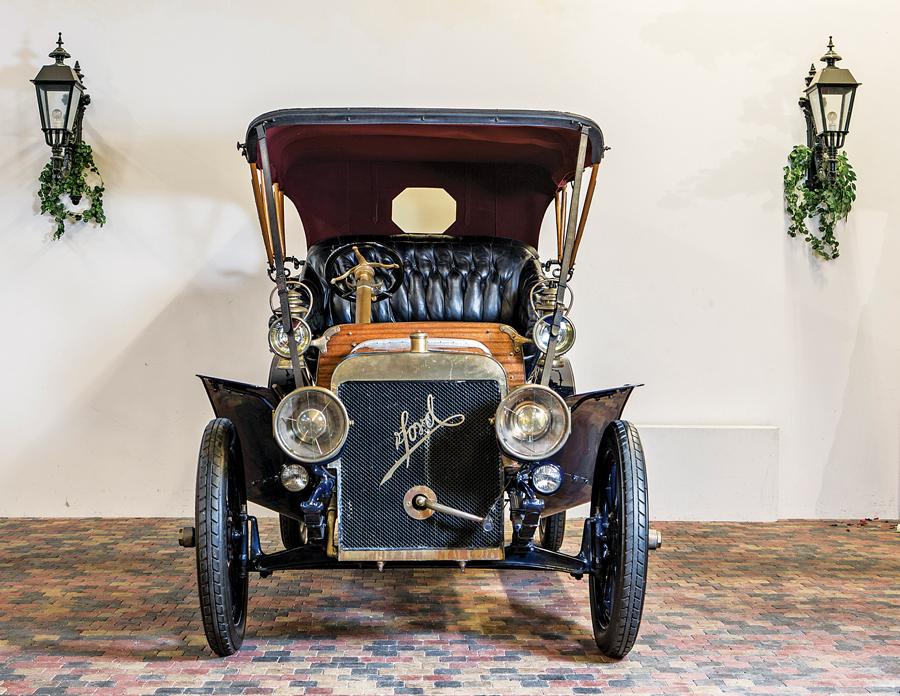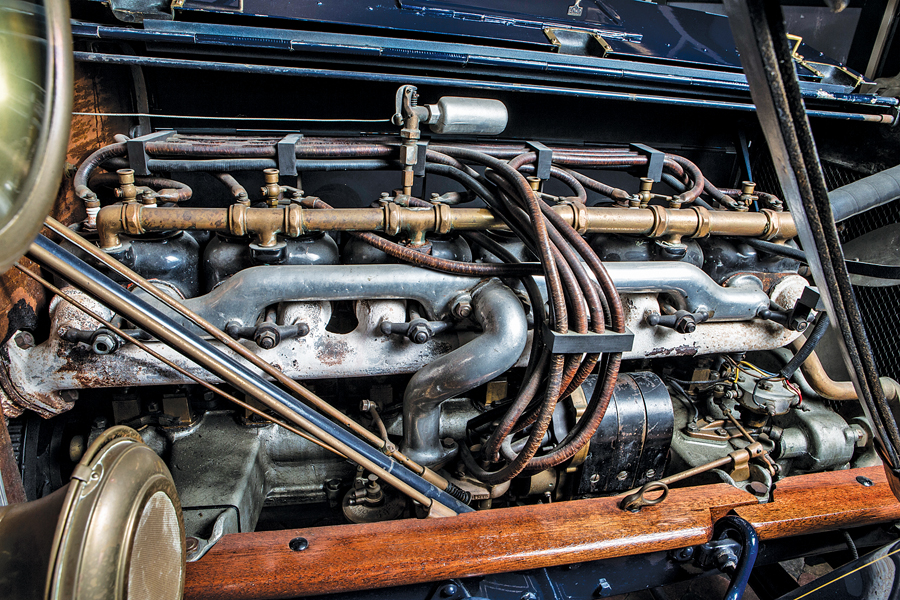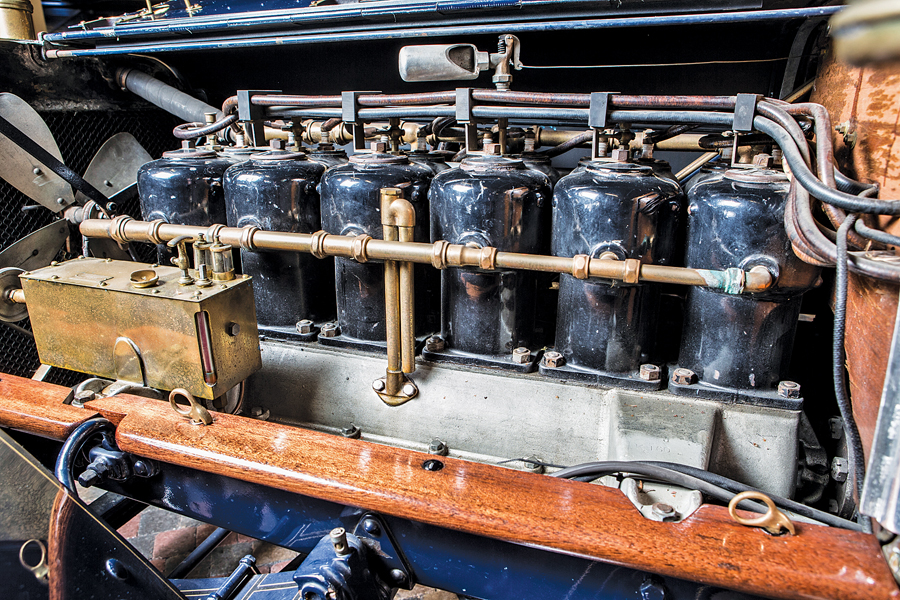SCM Analysis
Detailing
| Vehicle: | 1906 Ford Model K tourer |
| Years Produced: | 1906–07 |
| Number Produced: | 950 |
| Original List Price: | $2,800 |
| Club Info: | Antique Automobile Club of America |
| Website: | http://www.aaca.org |
| Alternatives: | 1907 Packard Model 30, 1907 Pierce-Arrow Model 65, 1907 Peerless Model 18 |
| Investment Grade: | B |
This car, Lot 195, sold for $401,856, including buyer’s premium, at Bonhams’ Den Hartogh Collection sale at Hillegom, NLD, on June 23, 2018.
Henry Ford and the Model T changed the American landscape by providing dependable transportation that most people could buy.
Ford also revolutionized manufacturing by refining assembly-line mass production. He also improved his workers’ standard of living with the five-dollar-a-day wage. As a result, he became one of the wealthiest people in the world.
It was, however, a rather winding road before he achieved his remarkable success.
Ford’s early days
After a few false starts, Ford joined the Edison Illuminating Company as a young engineer. In 1893, he was promoted to chief engineer.
This allowed him the time and resources to tinker with his true interest: gasoline engines. A few years later, he had developed his first self-propelled vehicle, the Ford Quadricycle.
Ford, encouraged by Thomas Edison, completed his second vehicle in 1898 and set off on his automotive career.
With financial assistance from a Detroit lumber baron, he founded the Detroit Automobile Company. It was a failure, as the cars were expensive and lacking in quality. Among his early achievements, however, he did receive a patent for the motorcar carburetor in 1899.
Ford did not abandon his dreams and built a successful 26-horsepower racer that resulted in the formation of the Henry Ford Company, with Ford as the chief engineer. Again, the Ford automobile failed to gain the public’s attention. When Henry Leland was brought in to assess the company’s value in liquidation, Ford resigned in disgust.
Leyland took over the company, and it became the Cadillac Motor Company. Ford’s resentment of Leyland was never forgotten.
Undaunted, Ford developed a race car — 999 — which Barney Oldfield drove to victory in late 1902. This attracted the backing of a Detroit coal dealer, and they formed Ford & Malcomson Ltd. to manufacture motor cars. The board was expanded to include the Dodge Brothers, and the company was reincorporated, with 12 stockholders, as the Ford Motor Company.
Competing visions
Henry Ford envisioned an efficient, simple, reliable motorcar that was affordable to most Americans. But the majority of the board favored a 6-cylinder luxury vehicle that would compete with Packard, Peerless and the other emerging upscale automobiles of the day.
Ford was quoted to have stated, “I’ve got no use for a motorcar that has more spark plugs than a cow has teats.”
The 6-cylinder Model K was introduced at the January 1906 New York Auto Show, and was priced at an impressive $2,800.
It is often stated that the Model K was a failure, but a review of the 1906 Ford internal audit records showed that it produced 85% of Ford Motor Company’s new-car profits for that year.
The Model K, offered as a roadster and tourer, was an impressive luxury motorcar. The car’s 405-ci straight-6 engine produced 40 horsepower. It had a polished brass radiator and brass Gray & Davis headlamps with matching side lamps. In its two-year run, only 950 Model Ks were produced — with 20 to 25 thought to still exist.
The Ford Model K was ahead of its time, as the Packard and Peerless for that era were 4-cylinder cars and the Pierce-Arrow did not offer a 6-cylinder until the 1907 Great Arrow.
Napier, which was manufactured in Boston, offered a 6-cylinder car — with a price tag of $8,000. Rolls-Royce offered a massive 7,036-cc, 6-cylinder engine with the 40/45, but that car also had a steep price.
The Ford Model K was elegant, well engineered and a relative bargain.
Model K production came to a close when Alexander Malcomson, a firm believer in producing luxury motor cars, left the board and Ford became a major stockholder. He was now able to follow his vision of the affordable Model T.
Our subject car
The Model K that Bonhams offered from the Den Hartogh Collection wore an older restoration that had been properly maintained. It was an impressive car, but we don’t often see early Fords selling for $400k.
The Model K, however, stands alone as a piece of Ford history.
At the same auction, Bonhams sold a 1905 4-cylinder Model B for $491,779. RM Sotheby’s, at their 2018 Arizona sale, sold a “barn find” Model K roadster for $252,000.
A few years earlier RM Auctions sold another roadster for $214,000. This Model K pushed the envelope, but as is often stated, “go find another.”
All in all, well bought and well sold. ♦
(Introductory description courtesy of Bonhams.)



